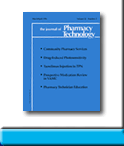 |
 |
Treatment and Management of Postmenopausal Osteoporosis Within an Ambulatory Care Network
Robert J Romanelli, Angela Leahy, Trevor Jukes,
Denis Y Ishisaka
To request full article click here.
Background: Postmenopausal osteoporosis (PMO) is associated with substantial morbidity and mortality. Despite established guidelines for the care of PMO, the treatment and management of this disease remain suboptimal.
Objective: To examine the treatment and management of PMO in a community-based ambulatory care setting.
Methods: Women with a new diagnosis of PMO (International Classification of Diseases, 9th Revision, code 733.01) were identified through the electronic health records (EHR) of a community-based ambulatory care network in northern California between January 1, 2007, and December 31, 2008. Patients were included if they were 65 years of age or older and had EHR activity 26 months or more after diagnosis. They were excluded if they had a diagnosis of osteoporosis (ICD-9:733.xx) prior to the study period. A retrospective review of the EHR and medical charts was performed to identify patients who were prescribed FDAapproved pharmacotherapy, who received bone mineral density (BMD) testing via dual-energy X-ray absorptiometry (DXA), and who experienced a fracture.
Results: One hundred thirty-one PMO patients were identified who met study eligibility criteria. Fifty-nine patients (45%) were prescribed FDA-approved pharmacotherapy at diagnosis. Ninety patients (69%) were prescribed pharmacotherapy at any point during follow-up. Sixty-four patients (49%) had a baseline DXA scan and 95 patients (73%) had 1 or more DXA scans during follow-up. Seventeen of 90 patients (19%) who received pharmacotherapy had 2 DXA scans within 2 years of follow-up. Nineteen fractures were reported among 16 patients during the study period.
CONCLUSIONS: The proportion of patients with PMO who received pharmacologic treatment at diagnosis and had a baseline DXA scan was relatively low; however, the majority of these patients received treatment and had 1 or more DXA scans at some point during the 26-month follow-up period. Future studies should be conducted to assess the role of early BMD testing and pharmacologic intervention in optimizing outcomes among women with PMO.
J Pharm Technol 2013;29:55-60
To request full article click here.
|
|
|
||
|

